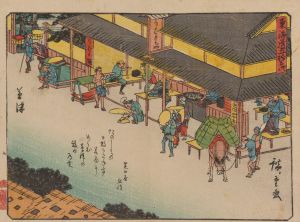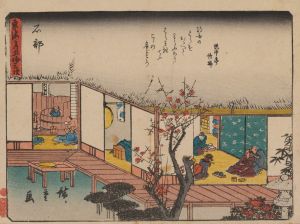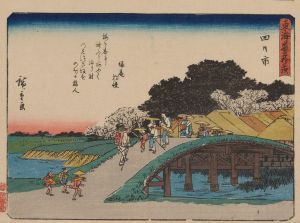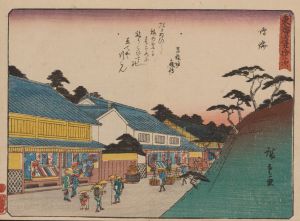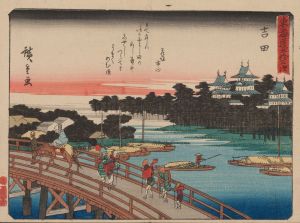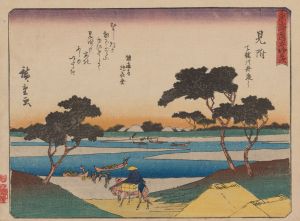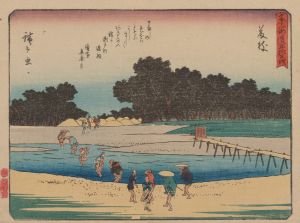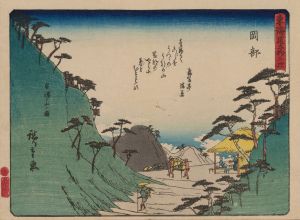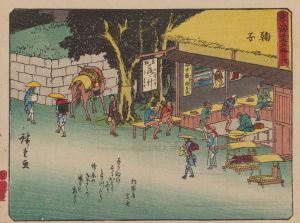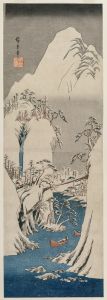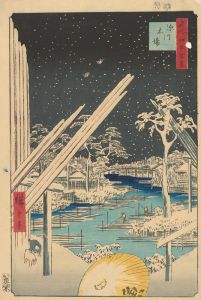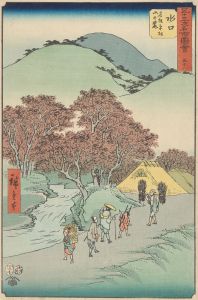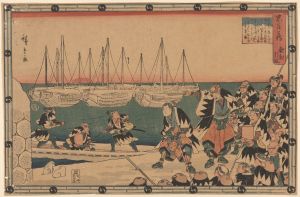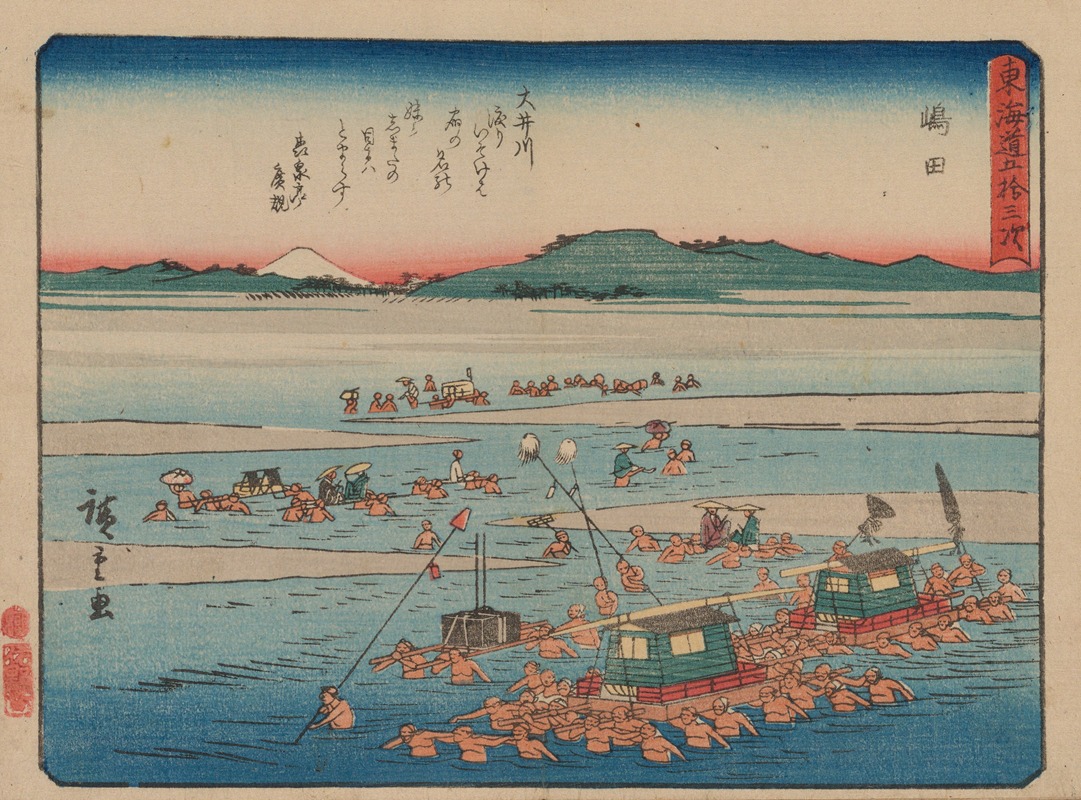
Tokaido gojusantsugi, Pl.24
A hand-painted replica of Andō Hiroshige’s masterpiece Tokaido gojusantsugi, Pl.24, meticulously crafted by professional artists to capture the true essence of the original. Each piece is created with museum-quality canvas and rare mineral pigments, carefully painted by experienced artists with delicate brushstrokes and rich, layered colors to perfectly recreate the texture of the original artwork. Unlike machine-printed reproductions, this hand-painted version brings the painting to life, infused with the artist’s emotions and skill in every stroke. Whether for personal collection or home decoration, it instantly elevates the artistic atmosphere of any space.
Andō Hiroshige was a renowned Japanese ukiyo-e artist, celebrated for his landscape prints and depictions of everyday life in the Edo period. One of his most famous series is "The Fifty-three Stations of the Tōkaidō" (Tōkaidō Gojūsan-tsugi), which illustrates the scenic views along the Tōkaidō road, a vital route connecting Edo (modern-day Tokyo) to Kyoto. This series, created after Hiroshige's journey along the Tōkaidō in 1832, captures the diverse landscapes and cultural life of Japan during that era.
Plate 24 of this series, often referred to as "Tokaido gojusantsugi, Pl.24," is titled "Kanbara: Night Snow" (Kanbara yoru no yuki). This print is particularly admired for its serene and evocative depiction of a snowy night in the post town of Kanbara. Unlike many other prints in the series that are bustling with travelers and activity, "Kanbara: Night Snow" is notable for its quiet and tranquil atmosphere.
The composition of the print features a snow-covered landscape with gently sloping hills and traditional Japanese houses blanketed in snow. Three figures are depicted walking through the snow, their heads bowed against the cold, which adds a human element to the otherwise still scene. The use of muted colors and the soft gradation of the sky enhance the feeling of a cold, silent night. Hiroshige's skillful use of bokashi, a technique of color gradation, is evident in the subtle transitions of color in the sky and snow, contributing to the overall mood of the piece.
"Kanbara: Night Snow" is often praised for its simplicity and elegance, capturing the beauty and stillness of a winter night. It stands out in the Tōkaidō series for its unique portrayal of weather and atmosphere, showcasing Hiroshige's ability to convey emotion and environment through his art. The print exemplifies the ukiyo-e genre's focus on capturing fleeting moments and the beauty of the natural world.
Hiroshige's work, including this print, had a significant influence on Western art, particularly on the Impressionists, who admired his compositions and use of color. His ability to capture the essence of a scene with minimal detail and his innovative compositions were revolutionary and left a lasting impact on the art world.
Today, "Kanbara: Night Snow" remains a celebrated example of Hiroshige's mastery in landscape printmaking. It is frequently exhibited in museums and collections worldwide, allowing audiences to appreciate the timeless beauty and cultural significance of Hiroshige's work. This print, along with the rest of the Tōkaidō series, continues to be a valuable representation of Japanese art and history, offering insight into the Edo period's travel culture and natural landscapes.





